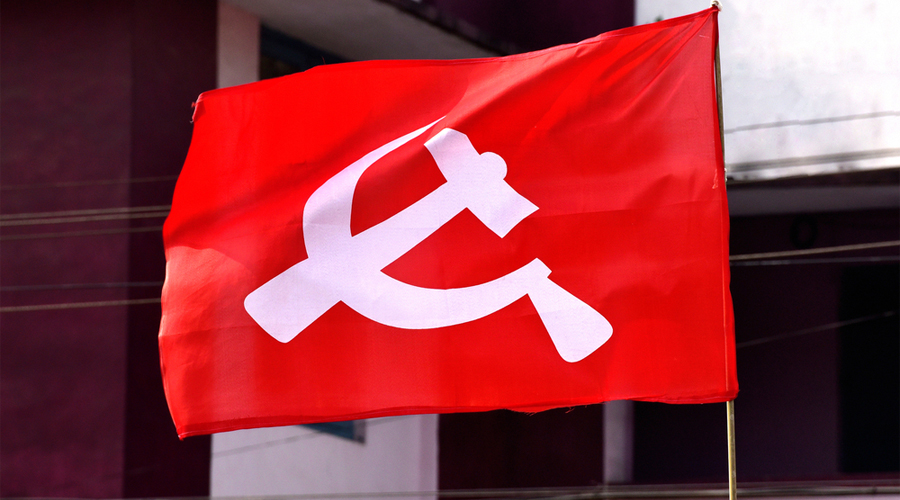The CPM bagged a little over 28 lakh votes this Bengal election. Trinamul won 35 lakh votes in South 24-Parganas alone, and 31 lakh in North 24-Parganas.
These figures, from the Election Commission, reflect the drubbing the onetime rulers of Bengal took this election almost as succinctly as the number of seats they won: zero.
The CPM’s vote share was a pitiful 4.70 per cent — less than a tenth that of Trinamul which, of course, contested 289 seats compared to the Marxists’ 139.
“The CPM, once a king in Bengal politics, became a beggar within a decade,” political scientist Biswanath Chakraborty said.
He was referring to the haemorrhage that began in the CPM’s vote bank with the 2009 general election —in the aftermath of the Singur and Nandigram movements — and could not be stanched even after 12 years.
The party that had been master of all it surveyed in Bengal since 1977 had received its first electoral jolt in 2009, watching Trinamul bag 19 of the state’s 42 Lok Sabha seats. The Marxists’ vote share tumbled to 33.09 per cent from the 37.13 per cent they had polled in the 2006 Assembly polls.
Since then, it has all been downhill, with the state lost in 2011, a desperate bid for power in alliance with the Congress in 2016 falling flat on its face, and an even more desperate attempt to stay relevant this time with a third, unexpected, bedfellow going up in smoke.
“Our vote share would have been even more dismal but for the decent haul from a few seats in Congress strongholds like Murshidabad,” a CPM source said.
In Bhagabangola, Murshidabad, the CPM candidate received 21.15 per cent of the votes to seal the second position after Trinamul. It was the only instance of the CPM bagging second spot this election.
In Siliguri, which had elected CPM heavyweight Ashok Bhattacharyya five times before, the party limped to third position with 16.14 per cent votes.
Nor could the younger candidates who had raised the hopes of some senior comrades do much better than finish a distant third in their seats although a few of them did better the party's average vote share.
Aishe Ghosh and Srijan Bhattacharya polled 14.89 per cent and 14.3 per cent from Jamuria and Singur, respectively. But in the high-profile seat of Nandigram, Minakshi Mukherjee’s spirited and much acclaimed effort earned her only 2.74 per cent of the votes.
Blunders
Several CPM insiders said the party's biggest mistake had been its desperate and deluded efforts to return to power by any means rather than admit the errors of the last few years of Left rule and attempt rectification.
In 2016, the CPM had entered into an ill-planned, unofficial, half-hearted “arrangement” with the Congress that couldn't convince its own grassroots workers.
Several of the party’s prominent campaigners criticised Mamata Banerjee's anti-land-acquisition movement, suggesting a party in denial that refused to learn the lessons of Nandigram and Singur even after a decade.
Contesting 148 seats, the CPM won just 26 and suffered the mortification of losing the post of leader of the Opposition to junior partner Congress. Still, the party won over 1 crore votes.
But the itch to ride on others' shoulders persisted. This time the party, sworn to secular politics and a communist ideology, did the unthinkable by tying up with a fledgling forum led by the cleric Abbasuddin Siddiqui, the Indian Secular Front.
The CPM contested only 139 seats, leaving 92 for the Congress, 37 for the ISF and the remaining 26 for its long-time Left Front allies.
Only a handful in the CPM are, however, ready to admit — and only in private — that this desperation to remove Mamata from power instead of undoing the damage at the grassroots has been the party’s biggest folly.
Many CPM insiders believe that it was a mistake to tie up with the ISF, a decision sources said came at the insistence of a politburo member who was desperate to win an Assembly seat.
Although the forum represents a range of marginalised communities, Abbas’s identity as a peerzada and some of his past pronouncements hurt the CPM’s reputation as a staunchly secular party.
“It wasn’t clear to the voters whether we were trying to go after Mamata by splitting the minority vote or contesting the BJP’s communal agenda. This confusion led to a desertion by Hindu as well as Muslim voters,” a party source said.
“A large number of Hindu voters had gone over to the BJP in 2019; this time many liberal Hindu voters rallied behind Trinamul to stop the BJP. The Muslim voters coalesced towards Trinamul with the same objective,” a CPM leader said.
Some CPM leaders this correspondent spoke to said that Alimuddin Street's dismissal of CPIML Liberation general secretary Dipankar Bhattacharya’s suggestion to identify the BJP as the “primary enemy” had bared the party’s confusion before the voters.
“More than backing a particular political party, the voters' priority this time was to keep the BJP out. They voted for Trinamul since we had failed to project ourselves as a force that could stop the BJP from coming to power in Bengal,” said Gautam Ghosh, a CPM state committee member, in Bolpur.
Several CPM leaders said the decision to equate Trinamul with the BJP was a mistake, and that listening to Bhattacharya's suggestion might have reduced the scale of the humiliation the party faced this election.
“Not only did our leaders compare Trinamul with the BJP, they even criticised several of Mamata Banerjee’s developmental projects that had greatly benefited the rural poor,” another CPM state committee member said, seeking anonymity.













